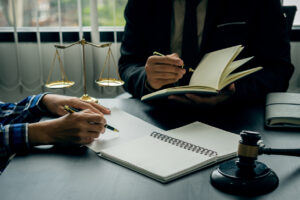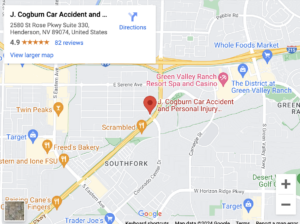
Nevada is a fault-based state for most personal injury claims. The victim must prove the legal elements of an injury claim to establish fault and liability. Since most courts do not accept hearsay, you generally need solid evidence that is not based on out-of-court statements. However, certain exceptions to the hearsay rule may apply depending on the circumstances.
Hearsay is an out-of-court statement made by someone who is not in court to testify as to what they said. Therefore, you cannot establish credibility. On the other hand, evidence is testimony from a witness or physical evidence entered into the record to make an alleged fact more or less probable.
What Types of Evidence Are Used in Nevada Personal Injury Cases?
The Nevada Rules of Evidence determine the types of evidence admissible in court. The evidence in your case depends on the specific facts and circumstances surrounding your accident and injury. Examples of evidence used in personal injury cases include, but are not limited to:
Accident and Incident Reports
The police or other entities may create incident and accident reports. For example, calling 911 should result in a police report for a car accident. Typically, accident reports cannot be used in court. However, either party may call the police officer as a witness in court to testify.
Videos and Photographs
There may be a video of your car crash, slip and fall accident, or other incident that caused your injuries. You may also have photographs you took at the accident scene to document the cause of your injuries. These items can be introduced in court and can be difficult to refute.
It is also wise to take photographs of your injuries during your recovery. Pictures help jurors “see” the severity of your injuries instead of trying to imagine the severity of your injuries based on medical records and testimony.
Medical Records
You must prove the accident or incident caused your injuries. Medical records help establish the types of injuries you sustained. The records also prove how much your medical treatment costs. Delays in medical care could hurt your case, so always see a doctor as soon as possible after an accident.
Physical Evidence From the Accident Scene
There could be physical evidence gathered at the accident scene that could help prove your personal injury case. For example, samples of a substance on the floor could help prove that a slippery surface caused your slip and fall accident.
Wage and Earning Records
If your injuries prevent you from working, you can recover compensation for loss of income and diminished earning capacity as part of your economic damages. Therefore, you need documentation of your earnings before the accident. You also need documentation of the time you missed from work. Earning records include W2s, 1099s, employer letters, income statements, pay stubs, etc.
Witness and Expert Witness Testimony
Eyewitness testimony can be compelling evidence in a personal injury case. Witnesses may be considered more reliable because they do not have a stake in the outcome of the case. Ask witnesses at the accident scene for their names and contact details.
Expert witnesses have specialized training, education, skills, and experience in a specific topic. Experts in personal injury cases include:
- Accident reconstructionists
- Medical specialists
- Financial professionals
- Trucking experts
- Manufacturing experts
- Investigators
- Appraisers
Experts may provide testimony at trial. The parties may take testimony from experts during discovery and offer reports by experts during settlement negotiations.
Pain and Suffering Journal
Pain and suffering is included in your non-economic damages. These damages are subjective because injured victims suffer in different ways. Even though you sustain the same injury as another person, your circumstances may cause significantly more pain and suffering.
Proving pain and suffering damages can be challenging. Keeping a journal with details of your recovery can be extremely helpful. Make notes about your emotional distress, activities you missed, tasks you could not perform, and your pain levels.
What Is the Burden of Proof in a Personal Injury Case?
Most personal injury cases are based on negligence. However, intentional torts, vicarious liability, and other wrongful acts could result in a personal injury case. Regardless of the grounds for your claim, you have the burden of proving the legal elements of the claim by a preponderance of the evidence.
Preponderance of the evidence does not require you to prove your case beyond a reasonable doubt. Instead, the evidence must convince jurors it is more likely than not that the allegations are true.
The strength of your evidence is a significant factor in how much you may receive for a personal injury settlement. An attorney from Cogburn Davidson Car Accident & Personal Injury Lawyers can help you gather and preserve evidence to build a solid case, proving the other party is responsible for your injuries and damages. Reach out to one to schedule a free consultation today at 702-996-4786.


